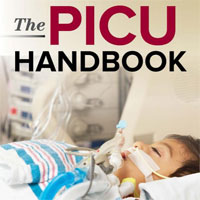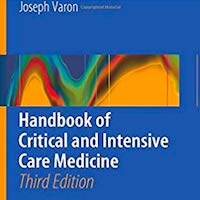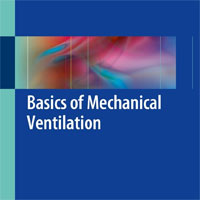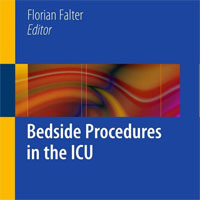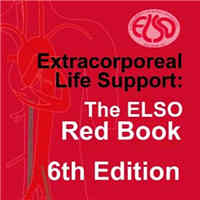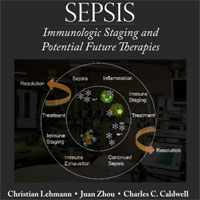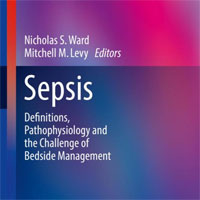Tag: ultrasound
Assessing TBI with Transorbital Sonography
Transorbital sonography (TOS) represents an innovative tool for neurological assessment. It has been validated that the presence or absence of eyelid edema does not compromise the accuracy of ultrasound-based pupillary function... read more
Venous/arterial Thromboembolism – Rare Side Effect Of Prothrombin Complex Concentrate
Venous/arterial thrombosis and pulmonary thrombosis accounts for very rare side effects of prothrombin complex concentrate and should be taken into account while administration. 68-year-old male with history of stroke,... read more
Implementing Bedside Percutaneous Tracheostomy and PUG Team to Reduce LOS
Thousands of critically ill patients every year in the United States receive tracheostomy and gastrostomy procedures. Recent research has investigated the benefits of a combined team approach to these procedures, with associated... read more
Specialty Imaging: HRCT of the Lung
Part of the highly regarded Specialty Imaging series, HRCT of the Lung, third edition, reflects the many recent changes in HRCT diagnostic interpretation. An easy-to-read bulleted format and thousands of state-of-the-art... read more
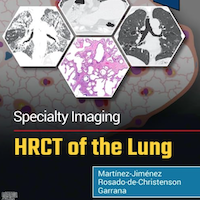
Extubation Failure Risk Prediction Model Using Bedside Ultrasound
We have established a risk prediction model for extubation failure in mechanically ventilated ICU patients. This risk model base on bedside ultrasound parameters provides valuable insights for identifying high-risk patients... read more
AI Interpretation of Chest Radiographs in the ICU. Ready for Prime Time?
Chest radiography (CXR) is the primary tool to visualize thoracic pathologies in the ICU. However, accurate interpretation of CXRs is challenging, even when imaging is performed under optimal conditions. This results... read more
Implementing a Bedside Percutaneous Tracheostomy and Ultrasound Gastrostomy Team Reduces Length of Stay and Hospital Costs
Thousands of critically ill patients every year in the United States receive tracheostomy and gastrostomy procedures. Recent research has investigated the benefits of a combined team approach to these procedures, with associated... read more
How I Perform Diaphragmatic Ultrasound in the ICU
The diaphragm is a thin, dome-shaped muscle, comprising a costal and crural part, and a non-contracting central tendon. Muscle fiber activation shortens and thickens the diaphragm in the zone of apposition, moving the dome... read more
Core Topics in Airway Management
Management of the airway is an important and challenging aspect of many clinicians' work and is a source of complications and litigation. The new edition of this popular book remains a clear, practical and highly-illustrated... read more
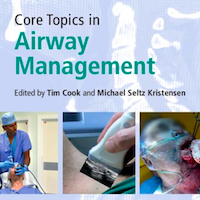
Advances in Critical Care Pediatric Nephrology: Point of Care Ultrasound and Diagnostics
The book covers advances in critical care pediatric nephrology, including care of sick children with acute kidney injury. The book contains detailed guidance on point of care ultrasound in children with acute kidney injury... read more
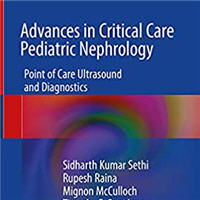
Predictive Value of Diaphragm and Lung Ultrasonography for Weaning Failure in Critically Ill Patients with ARF Due to COVID-19 Pneumonia
Patients undergoing mechanical ventilation due to respiratory failure require a comprehensive approach to determine the optimal timing for weaning from ventilatory support. Evaluating respiratory mechanics, maximal muscle... read more
Assessment of Respiratory Muscles, Lung Parenchyma, and Cardiac Function by Ultrasound for Predicting Weaning Failure in Critically Ill Adults
Parasternal intercostal muscle thickening fraction (PMTF) has good discriminatory power to predict weaning outcomes (area under the receiver operating characteristic curve: 0.74 [0.59–0.88]). Pre-SBT PMTF had similar power... read more
Effect of Different Shock Conditions on Mesenteric Hemodynamics
The velocity parameters of SMA Doppler ultrasound such as TAMV and PSV can reflect cardiac function. The measurements of SMA RI and PI are correlated with lactate levels, having a positive predictive value for hyperlactatemia... read more
Can Clinicians Identify CAP on Ultralow-dose CT?
This study found that clinicians could assess chest ULD-CTs for community-acquired pneumonia (CAP) with high, but not perfect, diagnostic accuracy using an ED radiologist’s assessments as reference standard. Interrater... read more
Lung Ultrasound for Diagnosis and Management of ARDS
Lung ultrasonography (LUS) is essential for diagnosing and managing adult respiratory distress syndrome (ARDS) due to its bedside accessibility and availability across different resource settings. It aids in diagnosis and... read more
Managing the Cerebral Complications of ARDS
Acute respiratory distress syndrome (ARDS) comprises 10–30% of critical care admissions worldwide. ARDS outcomes have improved secondary to ventilatory strategies that may potentially mitigate ventilator-induced lung injury.... read more
Doppler Ultrasound Identified Venous Congestion in Septic Shock
Venous congestion is a pathophysiological state where high venous pressures cause organ edema and dysfunction. Venous congestion is associated with worse outcomes, particularly acute kidney injury (AKI), for critically ill... read more
VA-ECMO in High-Risk Pulmonary Embolism
High-risk Pulmonary Embolism (PE) has an ominous prognosis and requires emergent reperfusion therapy, primarily systemic thrombolysis (ST). In deteriorating patients or with contraindications to ST, Veno-Arterial Extracorporeal... read more
Verticalization Therapy for ARDS Patients Receiving VV-ECMO
Persistent hypoxemia during veno-venous extracorporeal membrane oxygenation (VV-ECMO) for supporting acute respiratory distress syndrome (ARDS) patients is a clinical challenge for intensive care medical providers. Prone... read more
Fluid Responsiveness Evaluation with Integrated Ultrasonographic Approach
In a group of non-ventilated patients, who had already undergone the initial resuscitation, we demonstrated that the evaluation of the fluid responsiveness (FR) based on echocardiography and lung ultrasound increased the... read more
CEUS Value in Diagnosis of AKI in ICU patients
Ultrasound can assess renal perfusion, but its role in the evaluation of acute kidney injury (AKI) is still unclear. This prospective cohort study was to investigate the value of contrast-enhanced ultrasound (CEUS) in the... read more
Rescue TEE Might Diagnose Cardiac Arrest Faster
A Penn Medicine team is testing whether a new technology that gives live ultrasound images from inside a patient during CPR can help doctors get those answers faster. The device, called Rescue TEE, uses a tiny camera at the... read more


